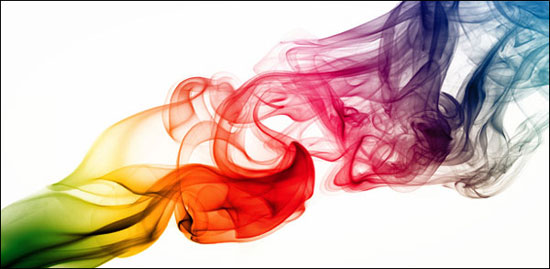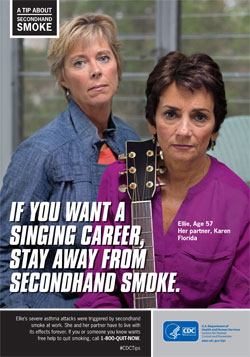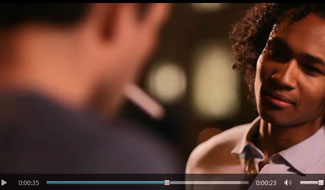Smoking out an LGBT foe
November 14, 2013
With gay men, lesbians and bisexuals firing up far more frequently than heterosexual Californians, health officials are moving to create effective anti-smoking campaigns to persuade LGBT smokers that quitting is smart, community-minded and even sexy.
One project, being rolled out by the Los Angeles County Department of Public Health later this month, plans to take an edgy “break up with tobacco” message into gay bars and clubs.
Meanwhile, the state has released an anti-smoking video aimed at the LGBT community. The video, which shows a couple of handsome young gay men leaving a bar together, doesn’t just target smoking—it also emphasizes the importance of saying no to second-hand smoke. When one of the men starts to light a cigarette outside the bar, the other gently pushes it away from his lips as a voice-over announcer says: “It’s time to speak up. We have to protect each other.”
Nationally, the Centers for Disease Control and Prevention have showcased a lesbian bartender in the widely-watched “Tips from Former Smokers” national tobacco education campaign. The ads feature real people discussing the painful and at-times disfiguring effects of tobacco. Ellie, the bartender, never smoked herself but started having asthma attacks after years of exposure to second-hand smoke on the job.
It’s not the first time that public health officials have tried to confront the problem. Several years ago, for instance, Los Angeles County provided grant funds to several clinics to conduct LGBT-oriented smoking cessation programs. That campaign’s tagline: “Learn how to quit smoking without being scared straight. (As if you could be.)”
But a strongly-entrenched LGBT smoking culture remains, even as overall smoking rates in California have dropped over the past three decades.
Statistics released in June by the state Department of Public Health’s Tobacco Control Program show that gays, lesbians and bisexuals are more than twice as likely to smoke as heterosexuals—27.4%, compared to 12.9%.
More than a quarter of gay men smoke, compared to 16% of straight men, the state found. Among lesbians, 24.4% smoke—a rate 2½ times that of heterosexual women.
What’s more, second-hand smoke is dangerously widespread. More than 40% of gays, lesbians and bisexuals reported that they sometimes allowed smoking in their homes, compared to 23.4% of heterosexuals. The state report draws on data collected in the California Adult Tobacco Study from 2005 to 2010 among self-identified gays, lesbians and bisexuals.
The reasons for the high smoking rates can be complex.
For one thing, stress can be higher in the LGBT community, sometimes compounded by issues associated with coming out or family disapproval, said Susan Cohen, health education consultant for the L.A. Gay & Lesbian Center. Perhaps even more powerful, she added, is a strong bar culture that fosters an “unfortunate partnering of cigarette smoking and alcohol,” even though indoor bar smoking is now outlawed in California.
Others note that while an overall culture of disapproval of smoking and second-hand smoke has grown in recent years, it’s been slower to take hold in the LGBT community, where tolerance is a strongly-held traditional value.
“They’re basically loath to tell other LGBTs what to do or not do…That’s what we believe is translating into a more live-and-let-live attitude toward second-hand smoke,” said Francisco Michel, a media specialist with the state Tobacco Control Program.
Another challenge is confronting tobacco industry advertising aimed at the LGBT community. While some have decried the targeting, others see it, oddly enough, as a sign of respect.
“Some folks say, ‘See, we’re just like any other market,’ ” Michel said.
That’s why health officials believe it’s important, and effective, to fight fire with fire, offering another story line—preferably one that is sophisticated and engaging—to offset Big Tobacco’s persuasive tactics.
“I do think we have to continue with counter-messaging,” said Cohen, of the Gay & Lesbian Center. “The tobacco industry spends billions to get us to smoke.”
Posted 10/31/13















 405 bridge work causes a stink
405 bridge work causes a stink
